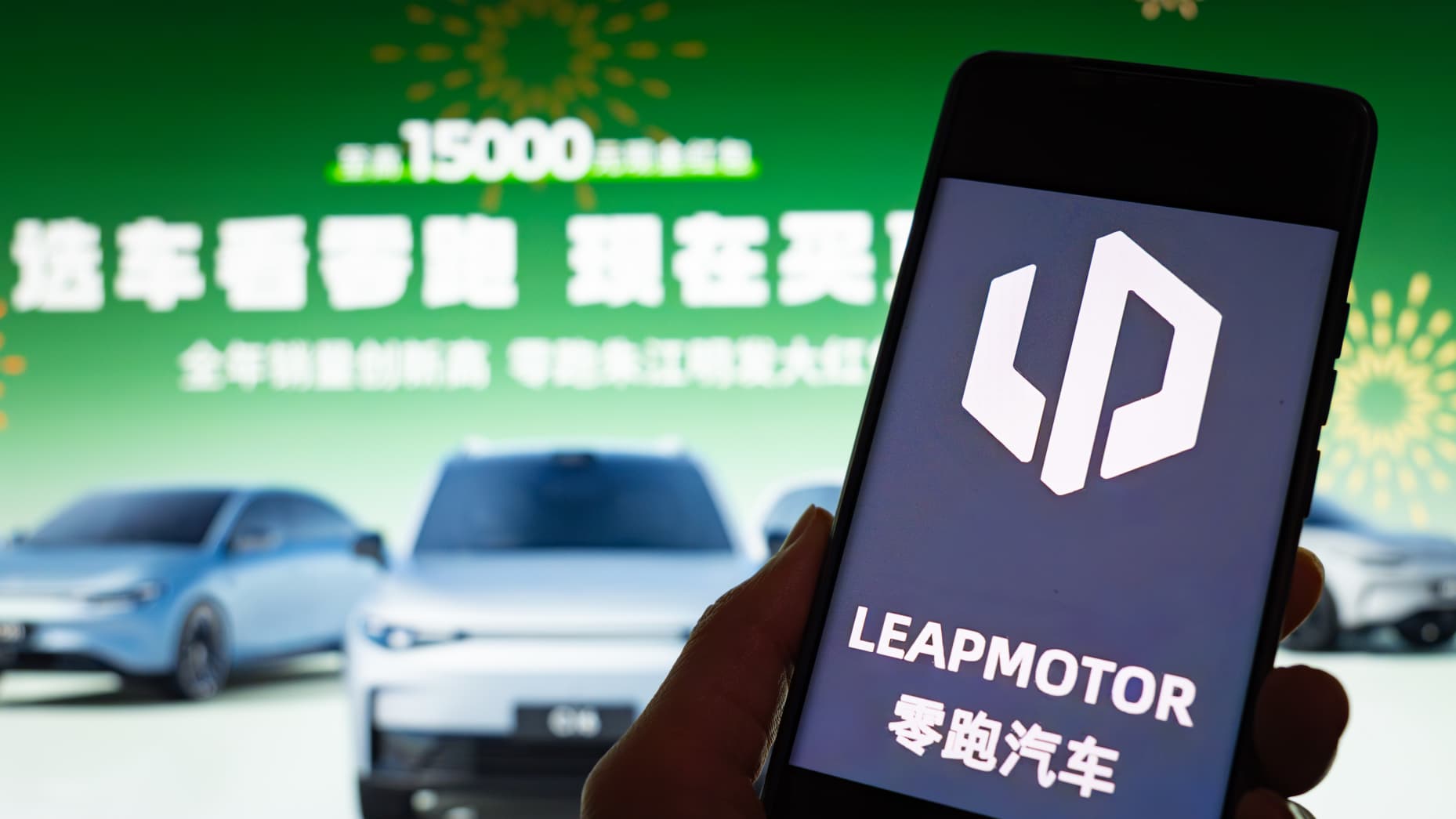A wave of momentum swept through China’s electric-vehicle scene in May as several homegrown brands posted record deliveries, underscoring a market still buoyed by aggressive pricing, new model launches, and ongoing consumer appetite for affordable and premium EVs alike. Leapmotor, backed by Stellantis, led with a standout performance, while Aito, backed by Seres, followed closely behind. At the same time, industry giants and ambitious startups alike navigated a price-competitive landscape that has sparked intense scrutiny over channel practices, supply dynamics, and expansion ambitions. Against a backdrop of tariff considerations and strategic bets on new markets, May’s results highlighted a sector that remained in growth mode but showed increasing sensitivity to pricing, competition, and the strategic value of technology-enabled differentiators.
Leapmotor and Aito deliver record May volumes amid rapid model evolution and luxury positioning
Leapmotor’s May deliveries surged to a record 45,067 vehicles, marking a year-on-year expansion of 148%. This level of growth signals a rapid scale-up for a relatively young automaker in a market saturated with both incumbents and nimble startups. Leapmotor attributed part of its May success to a refreshed product cadence, including the launch on May 15 of an updated version of its C10 model. The C10 is positioned as a mid-sized SUV designed to appeal to families and urban drivers seeking a compact but capable electric vehicle with modern features and competitive pricing. The updated C10 retail price began at 122,800 yuan, a price point that positions the vehicle within reach for many buyers considering a move to an electric SUV in the mid-size segment. In May, Leapmotor reported that over 13,000 units of the C10 were delivered, a substantial tranche that underscores demand for refreshed designs and the perceived value of feature-set upgrades in a market where consumers weigh price, range, charging convenience, and brand appeal.
On the other side of the market’s velocity, Seres-backed Aito reported a May record delivery figure of 44,454 vehicles. This achievement signals robust demand for Aito’s offerings and underlines the strategy of leveraging Huawei technology to bolster its vehicle ecosystem and connectivity advantages. Aito’s May performance comes as the automaker prepared to roll out a new ultra-luxury sedan, the Maextro S800, which officially debuted on May 30 with a starting price of 708,000 yuan. The Maextro S800’s pricing and positioning reflect a deliberate push into the premium segment where technology and luxury converge, a space where brand perception and ride experience can drive higher margins and create a distinct value proposition compared with mass-market EVs.
The rapid growth of Leapmotor and Aito in May occurred in a broader context of price competition and market consolidation as other players pursued aggressive pricing and expanded feature sets. The elevated pace of orders for Leapmotor and Aito suggests that a segment of Chinese consumers remains highly receptive to new model introductions that combine improved range, efficiency, and technology at price points that are increasingly accessible to a wider portion of buyers. The record deliveries also reflect the effectiveness of each company’s go-to-market strategy, which appears to combine targeted incentives, timely model updates, and strategic partnerships that strengthen after-sales support and charging infrastructure access for customers. As both brands continue to refine their product lineups, they may be poised to translate continued order momentum in the coming quarters, provided supply chains and component costs remain manageable, and as consumer confidence in EV ownership continues to solidify amid a broader macroeconomic backdrop.
The broader implications of Leapmotor’s and Aito’s May results extend beyond individual brand performance. They illustrate how Chinese EV startups are increasingly able to capture demand through a combination of design updates, price positioning, and technology-enabled differentiators. For Leapmotor, the C10 refresh represents a tactical response to growing competition within the mid-sized SUV space, where buyers seek a balance of practicality, comfort, and efficiency without sacrificing driving enjoyment. For Aito, the Maextro S800 signals a strategic foray into a higher-end segment, where premium branding and luxury features, supported by advanced software and Huawei-enabled connectivity, can help differentiate the brand in a crowded field. Both companies appear to be leveraging innovation and speed to market to lock in orders and build brand loyalty among early adopters and technology enthusiasts.
BYD, Xiaomi, and the broader price-war landscape reshape the mass-market segment
Even as Leapmotor and Aito recorded record deliveries, BYD maintained its dominant market share with May sales totaling 376,930 vehicles. The overall May car sales figure rose by 14.1% year on year based on publicly available data, underscoring the ongoing strength of BYD’s holistically integrated model lineup, scale advantages, and extensive dealer and service networks. In a pronounced move to manage inventory and sustain demand, BYD executed a broad price-reduction campaign on May 23 across 22 models, including a 20% price cut on the Seagull hatchback, reducing its price to 55,800 yuan. The Seagull’s price adjustment triggered a reassessment of valuations across the broader market and contributed to a share-price reaction of several Chinese automakers during the period. The price cuts were interpreted by market watchers as a strategic effort to accelerate inventory turnover and maintain demand momentum, especially in a market where competition is intensifying and consumer price sensitivity remains high.
The price-cutting wave arrived amid broader questions about whether the industry could sustain additional reductions without compromising margins, and amid concerns about channel practices and cash flow pressure within a few dealer networks. BYD faced public scrutiny after claims that it pressured a dealer in Jinan, Qiansheng, over cash flow concerns. BYD rejected these claims in a formal statement to Chinese media, emphasizing that the company adheres to fair business practices and remains committed to a collaborative dealer network. While such disputes rarely determine a company’s long-term trajectory, they do underscore the importance of channel governance and dealer-liaison strategies in maintaining a stable distribution network during a period of rapid growth and price competition.
Beyond its mass-market initiatives, BYD’s broader market strategy remains focused on consolidating its leadership in traditional EV segments while differentiating through price tactics and new model introductions. The combination of aggressive pricing and a diversified product pipeline is designed to expand the customer base, clear excess inventory, and drive ongoing demand for both compact city EVs and larger family-oriented models. The price cuts also raise questions about long-term profitability and the pace at which new models and software capabilities can offset lower margins, particularly in an environment where component costs, logistics, and energy prices can fluctuate. For investors and industry watchers, the BYD price action in May serves as a barometer of how China’s leading EV OEMs balance scale advantages with the need to sustain consumer demand through competitive offers and compelling value propositions.
In parallel with BYD’s mass-market moves, another high-profile player in the ecosystem—Xiaomi—reported May deliveries exceeding 28,000 vehicles, continuing a pattern of strong execution. Xiaomi’s May performance mirrored its performance in the preceding month, signaling consumer appetite for the company’s venture into electrified mobility. Additionally, Xiaomi teased a new model in its YU7 luxury SUV series on May 22, with an anticipated July official launch. The Xiaomi-derived strategy exemplifies how consumer electronics brands are leveraging their existing customer ecosystems and brand affinity to create cross-category offerings in mobility, while seeking to translate hardware expertise into credible software and service capabilities that can enhance overall ownership experiences.
Meanwhile, Xpeng, a long-standing player in China’s EV space, saw May deliveries dip slightly to 33,525 vehicles from 35,045 in April. Despite the month-to-month decline, Xpeng reported a year-over-year growth rate of 230%, maintaining a sustained trajectory of delivering above 30,000 vehicles for the seventh consecutive month. On May 28, Xpeng further broadened its model lineup by officially launching the Mona M03 Max and the Mona M03 Plus, with starting prices of 129,800 yuan and 119,800 yuan, respectively. The Mona series expansion is aimed at offering more value propositions within the mid-to-lower price segments, reinforcing Xpeng’s strategy of expanding its reach to a broader cohort of EV buyers while preserving a strong emphasis on technology-driven driving experiences and software capabilities.
The market’s latest dynamics also highlight the role of new entrants from adjacent tech ecosystems. For example, Xiaomi’s ongoing foray into the EV space serves to illustrate how consumer electronics brands are increasingly using hardware and software synergies to enhance the value proposition of their automotive offerings. The ability to leverage established distribution channels, ecosystems, and brand trust can potentially accelerate customer adoption and foster cross-selling opportunities across products and services. At the same time, these moves introduce new competitive tensions that incumbents must address, particularly in the arena of software-driven features, connectivity, and over-the-air (OTA) updates, where differentiators can translate into meaningful consumer preference and retention.
The mid-range and premium segments expand with Li Auto, Zeekr, Nio, and Onvo offerings
While the mass-market segment experiences intense price competition, several mid-range and premium-focused players continued to post notable activity and steady volume gains. Li Auto delivered 40,856 vehicles in May, marking a year-on-year increase of 16.7%. This growth rate, while more modest than some peers, reflects Li Auto’s ongoing emphasis on a reliable family-focused EV lineup with strong value propositions such as range, practicality, and efficient powertrains. The company’s May performance suggests a trajectory of stable expansion as it expands its user base and scales production capabilities.
Zeekr, the Geely-owned sub-brand aimed at premium customers seeking advanced technology and distinctive design, delivered 18,908 vehicles in May, representing a 1.6% year-on-year increase. This modest growth sits in contrast with other brands’ higher expansion rates but underscores Zeekr’s strategic focus on differentiating through features such as its driver-assistance technology and premium interior experiences. Zeekr’s March announcement of free driver-assistance technology was a notable step in its effort to reinforce its value proposition among tech-savvy buyers who seek advanced safety and convenience features as core purchase drivers.
Nio’s May deliveries reached 23,231 vehicles, reflecting a 13.1% year-on-year growth. Within this total, the Onvo family-oriented smart electric vehicle brand contributed 6,281 units to the mix, illustrating that Onvo is now a meaningful sub-brand within Nio’s overall portfolio. Onvo’s performance in May stands out as the best month for the brand so far this year, highlighting how Nio’s multi-brand approach can help expand reach among different consumer segments, from families seeking practicality to enthusiasts who appreciate the latest software and performance enhancements. The Onvo line’s momentum suggests that Nio’s strategy to diversify its product lineup, including family-oriented offerings, may continue to attract new customers and convert existing ones into repeat buyers.
These mid-range and premium players illustrate a broader trend in the market: while mega-brand scale remains a major advantage, differentiated offerings that emphasize family practicality, premium tech, and distinctive ownership experiences can help sustain growth even as price competition intensifies. The mix of models—ranging from Li Auto’s practical family-oriented EVs to Zeekr’s premium tech-driven sedans, and Nio’s multi-brand strategy—speaks to a market that rewards product diversity and the ability to tailor vehicle lineups to various consumer needs and budgets. The continued overlap between technology, software services, and vehicle performance is likely to shape competition in the coming quarters, with buyers increasingly prioritizing not only the initial price but also ongoing ownership value, including software updates, safety features, and connected services.
Global expansion tensions and strategic pivots amid tariffs and emerging markets
Chinese automakers are actively seeking to diversify and expand beyond the domestic market as competition intensifies and policymakers balance consumer demand with the risk of overleveraging on price reductions. Tariffs imposed by the European Union and the United States on Chinese electric vehicles complicate efforts to grow beyond domestic borders. The tariff environment can hamper aggressive export strategies and raise the cost of establishing Westward market presence, potentially slowing the conversion of global demand into actual overseas sales. In response, many players are exploring alternative routes to growth that do not rely solely on Western markets for expansion, including adjacent regions and emerging markets where the competitive dynamics may favor different value propositions, such as affordable entry-level EVs or premium models with advanced software and connectivity features.
To diversify away from direct tariff exposure and to cultivate new revenue streams, several Chinese carmakers are considering markets in Africa and other regions with compelling growth potential. The strategies emphasize building local partnerships, establishing service networks, and offering vehicles tailored to regional conditions, which may include adjustments to range, charging solutions, and after-sales support. In line with these strategic pivots, BYD announced its formal entry into Benin on April 24, in collaboration with CFAO Mobility. This milestone signals a strategic push into new geographies where brand recognition, after-sales infrastructure, and financing options can drive adoption in regions that may have different competitive dynamics from China’s domestic market. The Benin expansion underscores the ongoing search for sustainable growth channels beyond the country’s borders and hints at a broader, more diversified internationalization plan that could unfold over the coming years.
The broader global strategy for Chinese EV makers hinges on balancing scale advantages at home with the need to adapt to diverse consumer preferences and regulatory environments abroad. For many, the path to Western markets remains a work in progress, given tariff barriers, regulatory standards, and the need for robust charging infrastructure. Simultaneously, the pursuit of new markets—particularly in Africa and other regions with evolving automotive ecosystems—offers an opportunity to establish first-mover advantages, build local manufacturing or assembly capabilities, and develop tailored product lines that resonate with regional buyer preferences. The trend toward international diversification aligns with the sector’s longer-term growth narrative: a world where the demand for electric mobility continues to expand, albeit with different speed and regulatory considerations across regions.
In addition to the geographic expansion angle, the industry is watching how the price-war dynamics influence brand strategies and market positioning. The May price cuts by BYD illustrate a short-term tactic to push volumes and clear inventory, which can have ripple effects on other brands’ pricing and incentive structures. If consumers come to expect frequent price adjustments or model-year updates that deliver perceived value, automakers may feel a perpetual need to refresh pricing in order to sustain demand and preserve market share. This environment places extra importance on product differentiation, software-enabled features, and the ability to deliver compelling total ownership costs. As brands navigate these pressures, the balance between aggressive pricing to protect market position and maintaining healthy margins becomes a central strategic question for management teams and investors alike.
The global footprint dimension also brings attention to supply chain resilience and component sourcing. The May performance of Leapmotor, Aito, and other players reflects not only demand strength but also the capacity of suppliers to meet a rapid ramp in orders for new models and updated versions. The capacity to source batteries, electronic control units, and advanced driver-assistance features at scale is foundational to maintaining momentum in a market where speed-to-market and software updates can influence consumer perception and competitiveness. As the industry continues to evolve, automakers may place increased emphasis on secure supply agreements, diversified supplier bases, and strategic stock management to avoid disruptions that could undermine growth trajectories or erode consumer confidence in a sector characterized by rapid change.
The strategic focus on emerging markets will also shape the competitive landscape in the near term. African markets, among others, can offer growth opportunities for brands seeking to expand beyond saturated domestic markets and tariff-charged regions. The Benin entry by BYD serves as a case study in how partnerships with local distributors and mobility specialists can facilitate market entry. These moves are often accompanied by the deployment of after-sales networks, financing options for buyers, and localized marketing campaigns that emphasize the value proposition of EV ownership in contexts where charging infrastructure and vehicle reliability are critical considerations. As global expansion progresses, Chinese automakers will likely continue to adapt their products, pricing strategies, and service models to align with regional expectations, regulatory frameworks, and the practical realities of local mobility ecosystems.
Conclusion
The May performance of Leapmotor and Aito demonstrates the continued vitality of China’s EV startup segment, with record deliveries signaling strong demand for refreshed designs, advanced technology, and the appeal of premium features in certain markets. BYD’s leadership remains evident, with a broad model lineup, targeted price actions, and ongoing attention to channel management and after-sales support. At the same time, Xiaomi and Xpeng show how tech-driven brands are integrating mobility with consumer ecosystems to broaden appeal, while traditional players like Li Auto and Zeekr emphasize a blend of practicality and premium tech to capture diverse buyer segments. The market’s price-competition dynamics are intensifying, creating both opportunities and risks as manufacturers seek to sustain growth and profitability.
As Chinese automakers pursue global diversification, tariffs and regulatory hurdles will shape how aggressively they pursue overseas growth in the near term. The emphasis on new markets, including Africa, and strategic partnerships such as BYD’s Benin entry, illustrate a longer-term strategy to build resilient, multi-regional footprints that can weather regional volatilities. The evolving landscape—characterized by model updates, premium and mid-range offerings, and a broad array of tech-forward features—suggests that the next phase of growth will hinge on strong execution across product, pricing, and after-sales excellence, coupled with a nuanced understanding of global demand patterns and the continued acceleration of EV adoption in households around the world.



